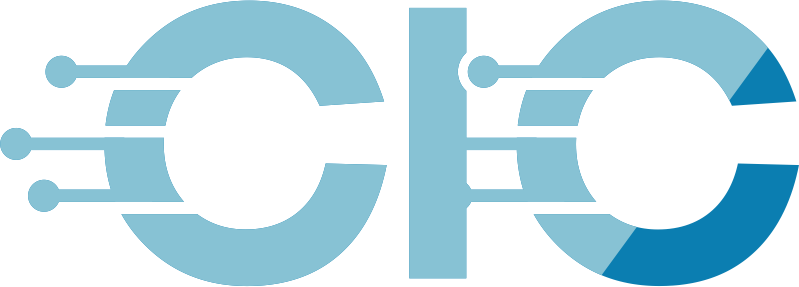Avio adopts 3DEXPERIENCE platform to manage space programs
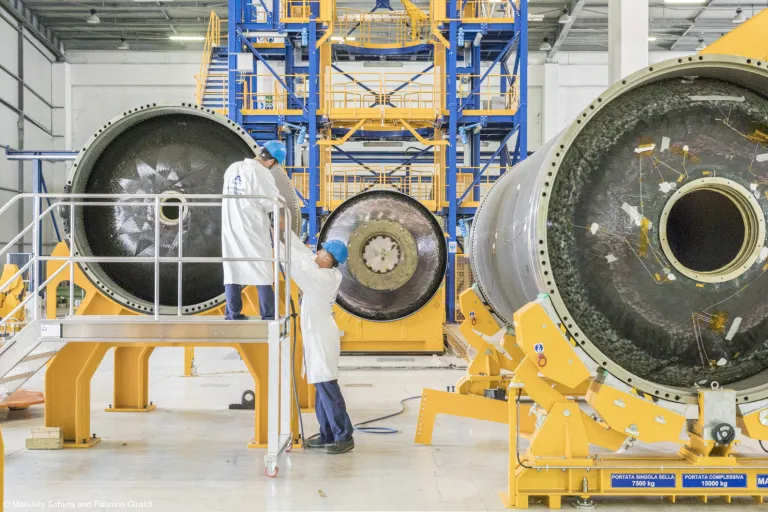
Four Dassault Systèmes industry solutions support collaboration and real-time data use at Avio and throughout its value chain. Dassault Systèmes announced that Avio, an Italy-based space propulsion company, has implemented the 3DEXPERIENCE platform to support the digital management of its programs. As Avio increases its focus on sustainability in the space sector, the 3DEXPERIENCE platform supports the use of automated, data-driven engineering and manufacturing processes to help improve the efficiency of space solution development. Users at Avio and within its value chain can support improved efficiency, standardization, quality, and compliance in the development of space launchers, propulsion systems, and payload adapters for European space programs. Avio will rely on Dassault Systèmes’ “Winning Concept,” “Co-Design to Target,” “Ready for Rate” and “Build to Operate” industry solution experiences based on the 3DEXPERIENCE platform to strengthen collaboration across teams, suppliers and partners by working with real-time data in a virtual environment. Avio aims to improve productivity by shortening development times and lowering operational costs, enhance design and manufacturing accuracy, support the introduction of new technologies, and streamline collaboration through an integrated virtual project management system. For more information, visit 3ds.com.
city is recording drivers that AI says are bad
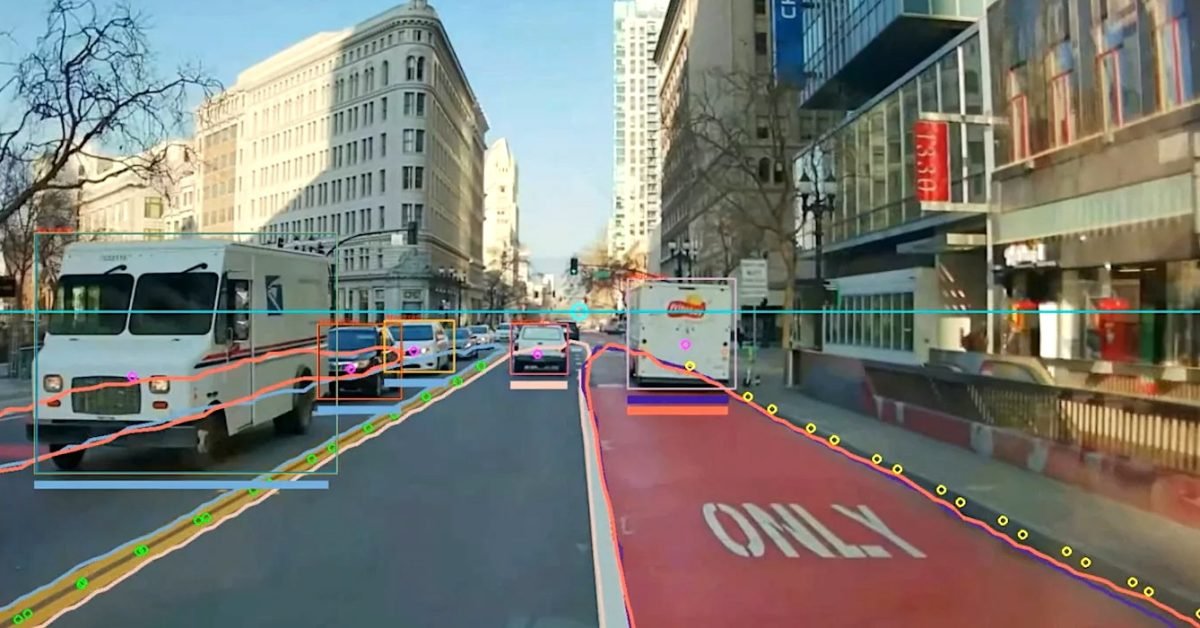
In a high-tech move that we can all get behind and isn’t dystopian at all, the City of Barcelona is feeding camera data from its city buses into an advanced AI, but they swear they’re not using the footage to to issue tickets to bad drivers. Yet. Barcelona and its Ring Roads Low Emission Zone have earned lots of fans by limiting ICE traffic in the city’s core. The city’s latest idea to promote mass transit is the deployment of an artificial intelligence system developed by Hayden AI for automatic enforcement of reserved lanes and stops to improve bus circulation – but while it seems to be working as intended, it’s raising entirely different questions. “Bus lanes are designed to help deliver reliable, fast, and convenient public transport service. But private vehicles illegally using bus lanes make this impossible,” explains Laia Bonet, First Deputy Mayor, Area for Urban Planning, Ecological Transition, Urban Services and Housing at the Ajuntament de Barcelona. “We are excited to partner with Hayden AI to learn where these problems occur and how they are impacting our public transport service.” Currently operating as a pilot program on the city’s H12 and D20 bus lines, the system uses cameras installed on the city’s electric buses to detect vehicles that commit static violations in the bus lanes and stops (read: stopping or parking where you shouldn’t). The Hayden AI system then analyses that data and provides statistical information on what it captures while the bus is driving along on its daily route. Advertisement - scroll for more content Hayden AI says that, while it photographs and records video sequences and collects contextual information of the violation, its cameras do not record license plates or people and no penalties are being issued to drivers or owners of the vehicles. So far so good, right? But it’s what happens once the six mont pilot is over that seems like it should be setting off alarm bells. Big Brother Bus is watching “You are being recorded” sign in a bus; via Barcelona City Council. The footage is manually reviewed by a Transports Metropolitans de Barcelona (TMB) officer, who reportedly reviewed some 2,500 violations identified by AI in May alone. But, while the system isn’t being used to issue violations during the pilot program, it easily could. And, in fact, it already has … and the AI f@#ked up royally. AI writes thousands of bad tickets NYC issued hundreds of thousands of tickets; via NBC. When AI was given the ability to issue citations in New York City earlier this year, it wrote more than 290,000 tickets (that’s right: two-hundred and ninety thousand) in just three months, generating nearly $21 million in revenue for the city. The was just one problem: thousands of those drivers weren’t doing anything wrong. What’s more, the fines generated by the AI powered cameras were supposed to be approved only after being verified by a human, but either that didn’t happen, or it did happen and the human operator in question wasn’t paying attention, or (maybe the worst possibility) the violations were mistakes or hallucinations, and the human checker couldn’t tell the difference. In OpenAI’s tests of its newest o3 and o4-mini reasoning models, the company found the o3 model hallucinated 33% of the time during its PersonQA tests, in which the bot is asked questions about public figures. When asked short fact-based questions in the company’s SimpleQA tests, OpenAI said o3 hallucinated 51% of the time. The o4-mini model fared even worse: It hallucinated 41% of the time during the PersonQA test and 79% of the time in the SimpleQA test, though OpenAI said its worse performance was expected as it is a smaller model designed to be faster. OpenAI’s latest update to ChatGPT, GPT-4.5, hallucinates less than its o3 and o4-mini models. The company said when GPT-4.5 was released in February the model has a hallucination rate of 37.1% for its SimpleQA test. FORBES I don’t know about you guys, but if we had a local traffic cop that got it wrong 33% of the time (at best), I’d be surprised if they kept their job for very long. But AI? AI has a multibillion dollar hype train and armies of undereducated believers talking about singularities and building themselves blonde robots with boobs. And once the AI starts issuing tickets to the AI that’s driving your robotaxi, it can just call its buddy AI the bank to send over your money. No human necessary, at any point, and the economy keeps on humming. But, like – I’m sure that’s fine. Embrace the future and all that … right? SOURCES: Hayden AI, via Forbes, Motorpasión. Your personalized home solar quotes are easy to compare online and you’ll get access to unbiased Energy Advisors to help you every step of the way. The best part? You won’t get a single phone call until after you’ve elected to move forward. Get started, hassle-free, by clicking here. FTC: We use income earning auto affiliate links. More.
Think everything on a solar equipment brokerage site is used? Think again.
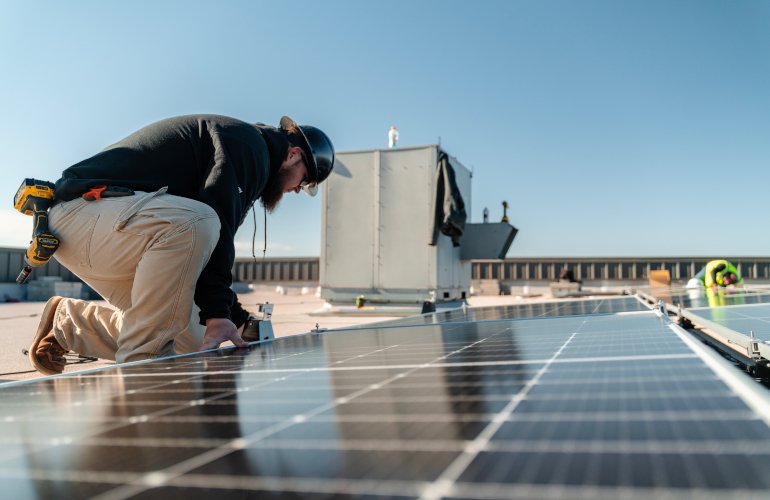
Think everything on a solar equipment brokerage site is used? Think again. Notifications
Charged EVs | Gotion completes 0.2 GWh pilot line for all-solid-state batteries
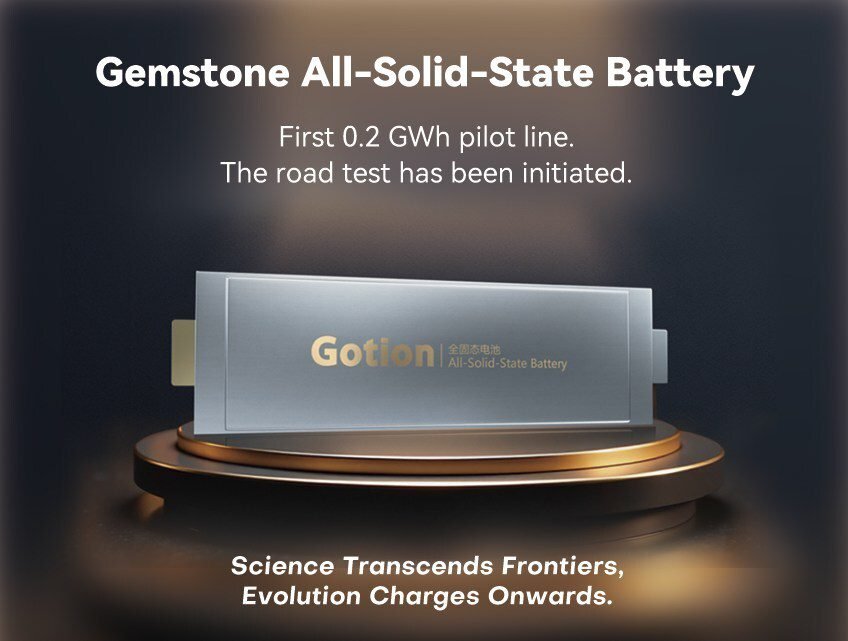
Chinese battery manufacturer Gotion High-Tech has completed a 0.2 GWh pilot production line, started in 2024, that has a 90% yield rate for its GEMSTONE all-solid-state battery. The 2025 iteration demonstrates a 60% improvement in sulfide electrolyte ion conductivity, 150% higher cell capacity and 90% reduced stacking pressure pre-tension force, the company said. Its safety has been validated through tests like nail penetration, crush test and thermal stability test. The company has also initiated road testing. Gotion has recently introduced six new energy products. The lineup includes the GEMSTONE all-solid-state battery, which has entered the pre-production phase, the G-Yuan quasi-solid-state battery that has range of 1,000 kilometers, the G-Series batteries designed for 12-year use and a 20 MWh energy storage system. The G-Yuan battery delivers 300 Wh/kg energy density, enabling EV ranges of over 1,000 km. Its adaptive solid-solid interface technology ensures stable ion transport. A 3 mm steel nail penetration test confirmed its safety. Gotion is currently building a 12 GWh production line and prototype vehicles are exceeding 10,000 km in road tests. The G-series is a 116 kWh, high-capacity standard box for heavy-duty trucks, delivering 175 Wh/kg specific energy to support megawatt-level ultra-fast charging and -40° C to 65° C temperature control range. It shows zero capacity decay in the first 3,000 cycles, zero energy loss over 1.2 million kilometers of driving and an ultra-long cycle life of 12 years or 10,000 cycles, according to Gotion. The Grid Q energy storage system delivers 20 MWh capacity per unit, backed by a 25-year design life. The modular design saves space while Air+Liquid cooling brings efficient thermal management. The Astroinno Gen-2 lithium manganese iron phosphate (LMFP) battery realizes 10-minute ultra-fast charging, 240 Wh/kg specific energy and 93% cold-weather capacity retention at -20° C. The battery passes the thermal runaway test at the PACK level. Source: Gotion High-Tech
Do Teslas Have Chronic Air Conditioning Problems?
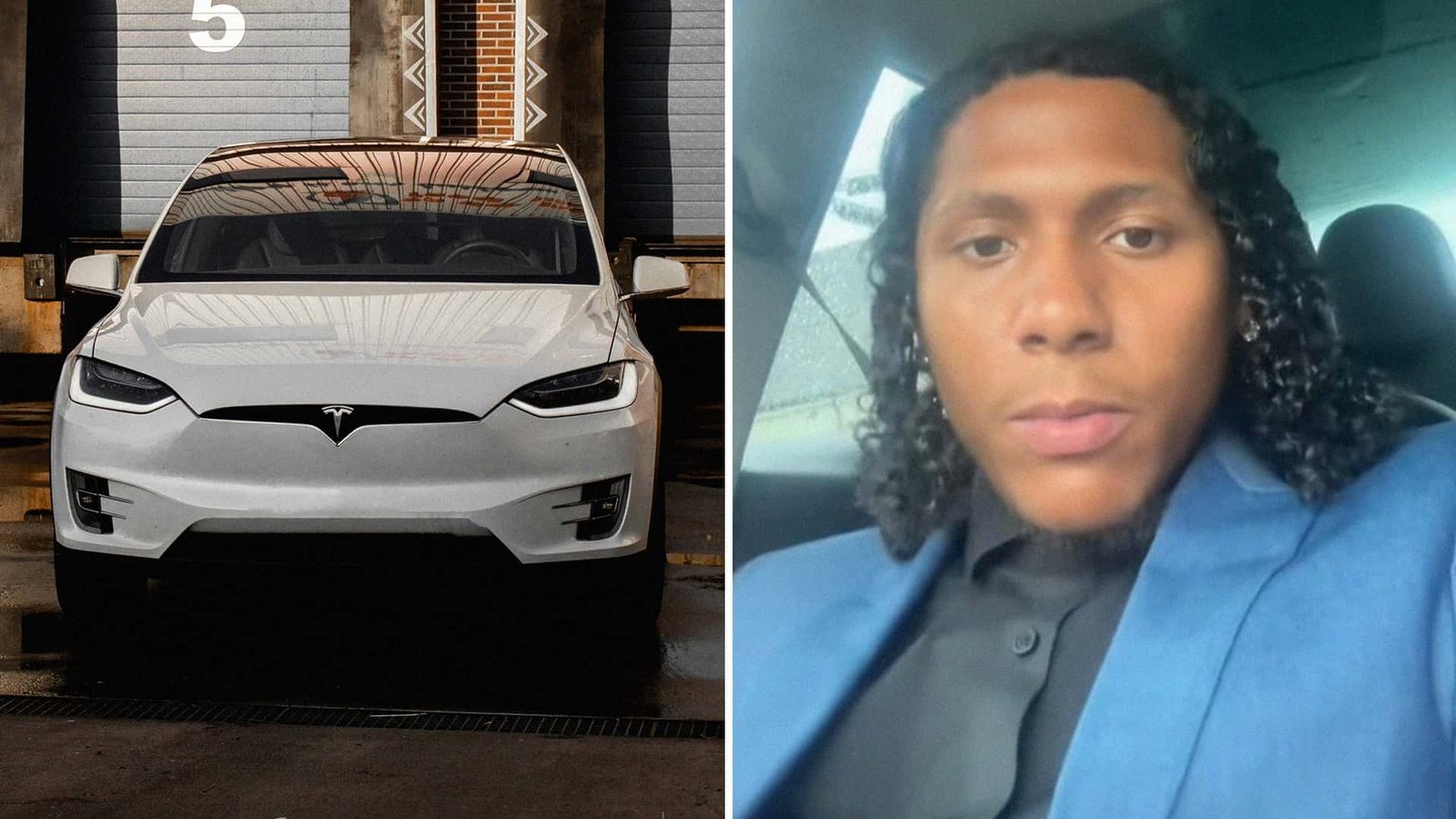
A Tesla owner says his brand-new car has an incredibly weak air conditioning system. He’s not the only one complaining that it’s too hot in their Tesla. Fabricio (@ayofabricio) recorded a TikTok from the driver seat of his Tesla Model 3. “I’m not gonna lie to y’all,” he says. “Yeah, this looks cool, so cool to play with. But dude when I first cut the car on bro, you cannot feel [expletive].” Then he manipulates the air flow using the vehicle on the touchscreen to make it more concentrated in one area. Next, he tries spreading the vent flow to cover a larger area. Despite all his efforts, however, Fabricio says nothing seems to make the car cooler. “You would think, ‘Oh, if I put it right in the middle, yes. It’s going right in my face,’” he says. He puts his hands where the air is supposed to be coming out. “I cannot feel it,” he complains. “I feel nothing. All this like spaceship [expletive] cool and all but like I gotta, I need to feel it man.” He keeps trying to improve the airflow but says he doesn’t feel much of a difference. According to the images on the car’s screen, the air should be directly hitting him in the face. Fabricio claims it isn’t. “By me putting it in the middle, it hits the steering wheel. But no. Come on, please go directly to me. It’s hot. I’m in New Orleans!” Fabricio’s TikTok has 19,000 views as of this writing. Dozens of people have offered advice that may solve his AC woes. A Common Tesla Problem Other Tesla drivers have complained about their car’s climate control systems. In 2020, a member of the Tesla Motors Club forum shared a fix they said worked for their “sweat box” of a Model X, which wasn’t blowing cold air. While digging through the car’s air conditioning options, they noticed an error message that read “climate keeper unavailable due to system fault.” After messing with it for a while, they figured out a multi-step process that fixed the issue. First, they disabled the Model X’s overheating protection. Next, they shut off the car’s A/C. Third, they performed a soft reset, which consists of simultaneously holding the car’s scroll keys until the infotainment screen reboots. Following this, they performed a reset, which is done the same way, but by engaging the car’s brake as well. After doing this, they checked the vehicle’s infotainment screen to see if that “unavailable” error message had disappeared. It hadn’t, which prompted them to perform numerous hard resets until finally the message vanished. Then they were able to restart the Tesla’s cabin overheat protection. Ultimately, cold air started flowing. Numerous users in the forum commented to share tales of their own air conditioning issues with Teslas. Many, but not all, of the reported issues were blamed on software or sensors. “I tried several reboots, however, it turns out my [car] needed new AC hose lines. $450 CAD repair job. I wasn’t as lucky,” wrote one. When Your Tesla’s AC Goes On The Fritz Other factors could lead to poor air conditioning performance in a Tesla. It could be as simple as a clogged cabin air filter. If it’s been a while since you’ve changed the cabin filter, you may want to try this first. Low refrigerant levels in your Tesla could also be the culprit. Your car may just be low on coolant or there could be an issue with your AC line. Either way, you’ll probably have to take it to a professional. The problem could also be related to the car’s software. Performing a reset might fix this issue. You may also want to check to see if your EV’s software needs to be updated to the latest version. If you’re in a particularly hot place, make sure to launch the update when you aren’t in the car. Otherwise, you might be stuck in a greenhouse on wheels. Condenser blockages, sensor, and hardware malfunctions could also be the reason why your Tesla isn’t blowing air the way you’d like. Many say the issue is, oftentimes, user error: drivers incorrectly set up cabin overheating protection. If their air conditioning isn’t working right, Tesla owners may want to first check their menu settings. Open the infotainment screen and tap "Controls > Safety > Cabin Overheat Protection." Once cabin overheat protection is selected, you’ll be presented with one of three options: Off, No A/C, and On. Click the off button and reset the car. Advice from Tesla Drivers Many people who say they drive Teslas commented on Fabricio’s post to offer him advice and defend their vehicles. Multiple people recommended pre-cooling the car remotely. One said Fabricio was directing the air incorrectly. “You’ve got it top, bottom and center on. Turn off the feet and windshield and only leave the center on,” they wrote, adding, “From Texas.” A few suggested that the problem was caused by him having all the vents open at once. “It’s because you got all the vents open,” one advised. “Just keep the one directed to your face on and turn off the other ones.” We have reached out to Fabricio via TikTok comment for further information. We’ll update this if he responds.
BYD Fang Cheng Bao files for Tai 7 hybrid SUV

The Tai 7 measures 4,999 mm in length and offers both single-motor and dual-motor options. The Tai 7 is expected to target a broader family user base with its larger size compared to the Tai 3. BYD (HKG: 1211, OTCMKTS: BYDDY) sub-brand Fang Cheng Bao has filed regulatory documents for the Tai 7, after announcing the naming of this new hybrid SUV (sport utility vehicle) model earlier this month. China's Ministry of Industry and Information Technology (MIIT) released the latest catalog of vehicle models set to be approved for sale today, seeking public feedback, with the Tai 7 included. The public may submit feedback from June 21 to 27. Inclusion in this catalog is the final major regulatory step for a vehicle model to be approved for sale in China. The Tai 7 has three pages in the catalog, with product models listed as QCJ6500BG6HEV, QCJ6500BG6HEV1, and QCJ6500BG6HEV2. Production facilities for the car are multiple BYD production bases in cities including Changsha, Hunan; Hefei, Anhui; and Jinan, Shandong. The hybrid SUV measures 4,999 mm in length, 1,995 mm in width, and 1,865 mm in height, with a wheelbase of 2,920 mm. Its curb weight is 2,230 kilograms, and it supports a maximum speed of 190 kilometers per hour. The Tai 7 comes standard with a 1,498 ml engine, producing 115 kW of power. It offers single-motor and dual-motor options. The dual-motor version features a front motor with a peak power output of 160 kW and a rear motor with 200 kW. The single-motor version uses a single motor with a peak power output of 200 kW. The Tai 7 is equipped with lithium iron phosphate (LFP) batteries supplied by BYD's battery unit, FinDreams Battery. BYD officially unveiled the Fang Cheng Bao brand on August 16, 2023. The brand currently offers models including the Bao 5 and Bao 8 off-road SUVs from the Bao series, as well as the Tai 3 compact family SUV from the Tai series. The Tai 7 is expected to target a broader family user base with its larger dimensions compared to the Tai 3, a market that is currently one of the key battlegrounds for major automakers. Earlier this month, Fang Cheng Bao began teasing the Tai 7 but did not disclose any further details beyond its name. Fang Cheng Bao sold 12,592 vehicles in May, a year-on-year increase of 418.19 percent and a month-on-month increase of 25.43 percent, according to data compiled by CnEVPost. This includes 5,598 Tai 3 units, 5,125 Bao 5 units, and 1,869 Bao 8 units. BYD Fang Cheng Bao to debut sedan lineup in late 2025, says brand chief
EnergyAustralia, EDF partner for ‘critical’ pumped hydro in NSW

EnergyAustralia, EDF partner for ‘critical’ pumped hydro in NSW - Energy-Storage.News Skip to content
MET Group inaugurates largest BESS in Hungary- Energy-Storage.News
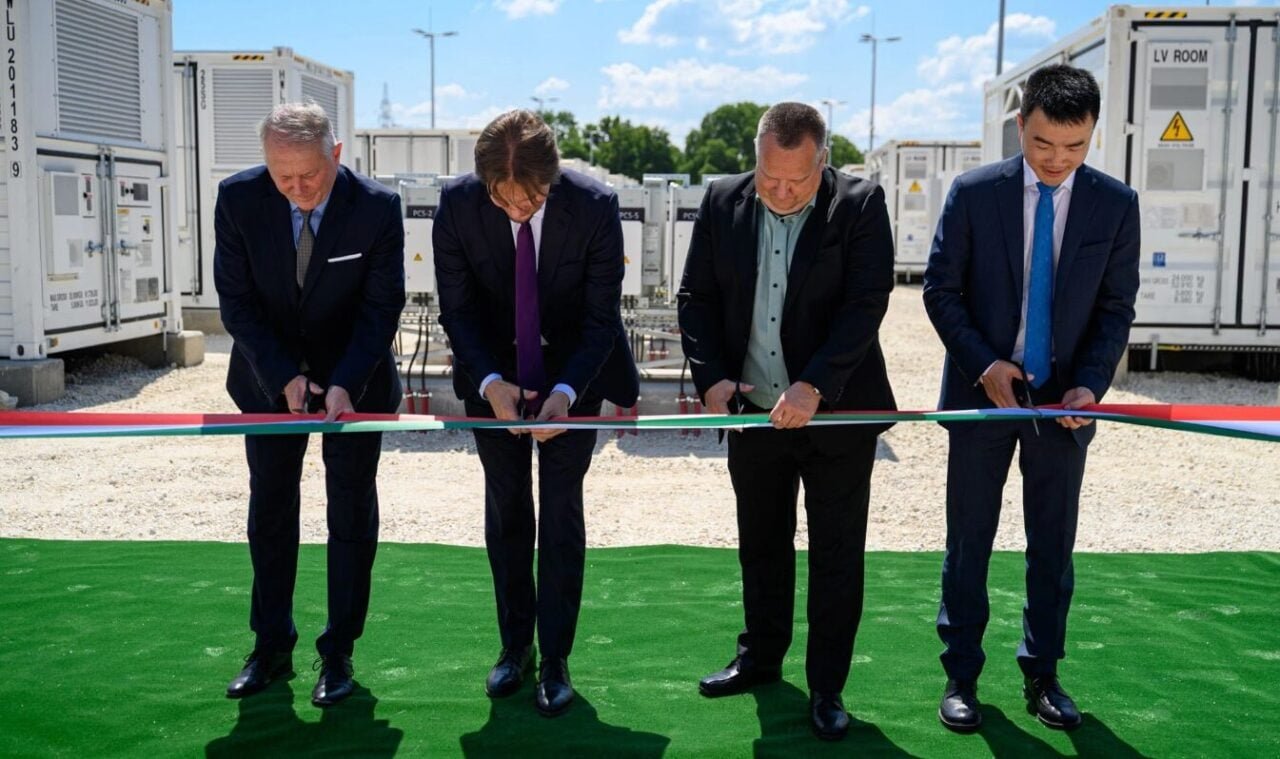
The company already deployed a 4MW/8MWh BESS there using Tesla Megapacks in 2022, but for the larger project opted to use China-based electronics giant Huawei. Although not the most regular figure in BESS news, Huawei does have a major presence in the industry. Wood Mackenzie ranked it as the fourth-largest BESS integrator in the world in 2022, after Sungrow, Tesla and Fluence. Images of the Hungary project provided by MET Group show the BESS units but without any clear Huawei branding. That would indicate the company gets its product to market via white-labelled supply to other system integrators, meaning it may have a much larger market presence than is apparent at first. BESS and power conversion system (PCS) units at the project. Image: MET Group. The project’s main contractor was Forest-Vill Ltd, MET Group added. Péter Horváth, CEO of the Dunamenti Power Station, commented: “The application of battery energy storage systems is a key element on the road to energy transition, as they allow to increase the penetration of new renewable sources into the power grid.” MET Group is also active in the French energy storage market, having acquired combined heat and power (CHP) and BESS operator Comax last year. In 2023, the EU approved a €1.1 billion (US$1.2 billion) capex support scheme in Hungary to kickstart the country’s large-scale energy storage market. A panellist at our publisher Solar Media’s Energy Storage Summit Central and Eastern Europe (CEE) 2024 last year in Warsaw called the scheme one of the most advanced subsidies schemes they had seen to-date.
Tesla has started rolling out initial round of Robotaxi invites
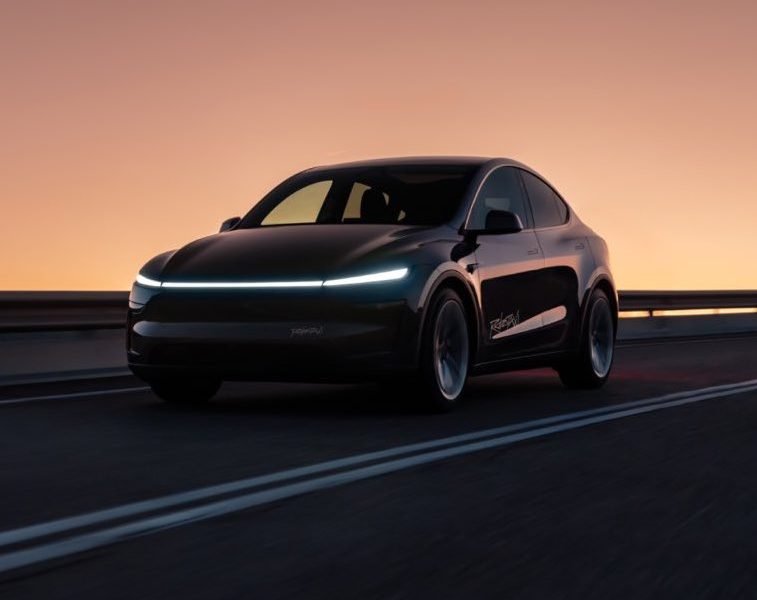
Tesla has started rolling out an initial round of invites for its upcoming Robotaxi service in Austin, Texas. Screenshots shared by several Tesla community members who received the invites provided a quick overview of the autonomous ride-hailing service. As noted in a techAU report, the initial round of Robotaxi service invites has gone to longtime Tesla owners and active members of the EV community. These include owners such as @SawyerMerritt, @BLKMDL3, @WholeMarsBlog, @ItsKimJava, and @HerbertOng, all of whom shared screenshots of the invitation that Tesla has sent about the upcoming service. I'm building a @X list of those who get Robotaxi Invites.. follow here.. So far we have– @SawyerMerritt – @BLKMDL3– @WholeMarsBlog – @ItsKimJava Let me know if you find others pic.twitter.com/pfqTpaEvi5 — techAU (@techAU) June 20, 2025 You’re Invited to Early Access of Tesla Robotaxi! The Future is Now! You’re invited to Early Access of Tesla’s Robotaxi service in Austin, TX! As an Early Access rider, you can be among the first to use our new Robotaxi App and experience an autonomous ride within our geofenced area in Austin. Through this exclusive preview, you’ll have the opportunity to provide valuable feedback on our Robotaxi service. Based on Tesla’s message, it appears that participation in the service would be strictly invite-only for now. Participants must also download Tesla’s dedicated Robotaxi App to hail a ride. Rides can also be requested and initiated to and from any location within a geofenced area of Austin. The robotaxi service will be available from 6:00 AM to 12:00 AM, seven days a week, though these hours may change depending on factors such as inclement weather. Interestingly enough, Tesla is inviting the first participants of the Robotaxi program to share photos and videos of their experience with the service. While the vehicles themselves are autonomous and would operate without human input, the Robotaxis would still be accompanied by a Tesla staff member to monitor the vehicle. This strategy suggests that Tesla is really putting safety above all in its initial Robotaxi rollout. The post Tesla has started rolling out initial round of Robotaxi invites appeared first on TESLARATI.
Cyprus regulator approves TSO-owned battery storage
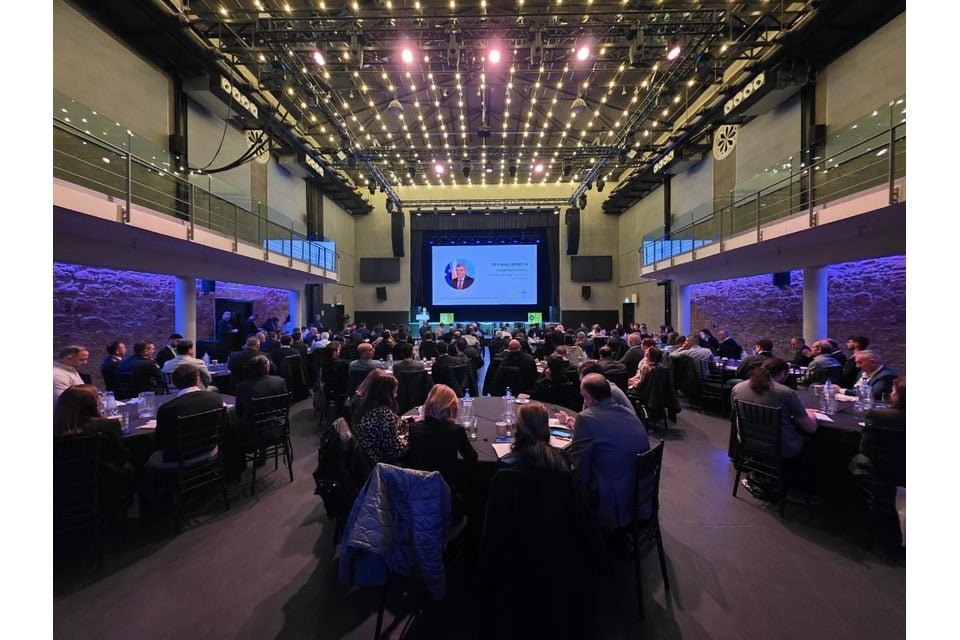
Cyprus regulator approves TSO-owned battery storage - Energy-Storage.News Skip to content
Tesla to launch in India in July with vehicles already arriving: report

xAI’s Grok 3 is partnering with Oracle Cloud to deliver its advanced AI model to corporate customers. Oracle announced its collaboration with xAI earlier this week. The partnership leverages Oracle’s robust infrastructure to offer xAI’s Grok 3, positioning it as a transformative tool for business applications. “Today, we announced xAI has selected Oracle to offer xAI’s Grok models via OCI Generative AI service for a wide range of use cases and will use OCI’s leading AI infrastructure to train and run inferencing for its next-generation Grok models,” said Clay Magouyrk, Executive Vice President at Oracle Cloud Infrastructure, via LinkedIn. Oracle’s cost-effective AI capabilities will support xAI’s demanding workloads, enabling faster processing for enterprise users. Oracle’s Karan Batta told Reuters: “Our goal here is to make sure that we can provide a portfolio of models – we don’t have our own.” Oracle will host Grok 3 alongside models from Meta, Mistral, and Cohere, ensuring corporate data remains secure within existing Oracle protections. Oracle’s strategy focuses on integrating popular AI models into corporate software, and xAI’s Grok 3 enhances this portfolio. The collaboration expands Grok’s reach to businesses seeking secure, high-performance AI solutions for diverse use cases. Elon Musk’s xAI launched Grok 3 in February. It competes with models from DeepSeek and OpenAI. Grok 3 is free for all X users, but features are limited. X offers Premium and Premium+ subscribers access to Grok 3’s advanced capabilities like DeepResearch and Think modes. Users who are not paid subscribers have access to Grok 3’s basic features. Elon Musk’s companies have a longstanding relationship with Oracle. In 2018, Tesla appointed Oracle founder Larry Ellison to its board, a move Wedbush analyst Daniel Ives called a “home run appointment.” In 2023, Ellison–who is no longer on Tesla’s board but still close with Musk–revealed plans for a Tesla Cybertruck police car. “Our next-generation police car is coming out very soon,” Ellison said at the 2023 Oracle CloudWorld conference in Las Vegas. “It’s my favorite police car. It’s my favorite car, actually. It’s Elon’s favorite car.” Grok 3’s integration into Oracle Cloud strengthens xAI’s position in the corporate artificial intelligence market. By combining Oracle’s infrastructure with Grok’s cutting-edge capabilities, this collaboration could redefine enterprise AI adoption, driving innovation across industries.
Mumbai installs battery swapping kiosks at public transport stations
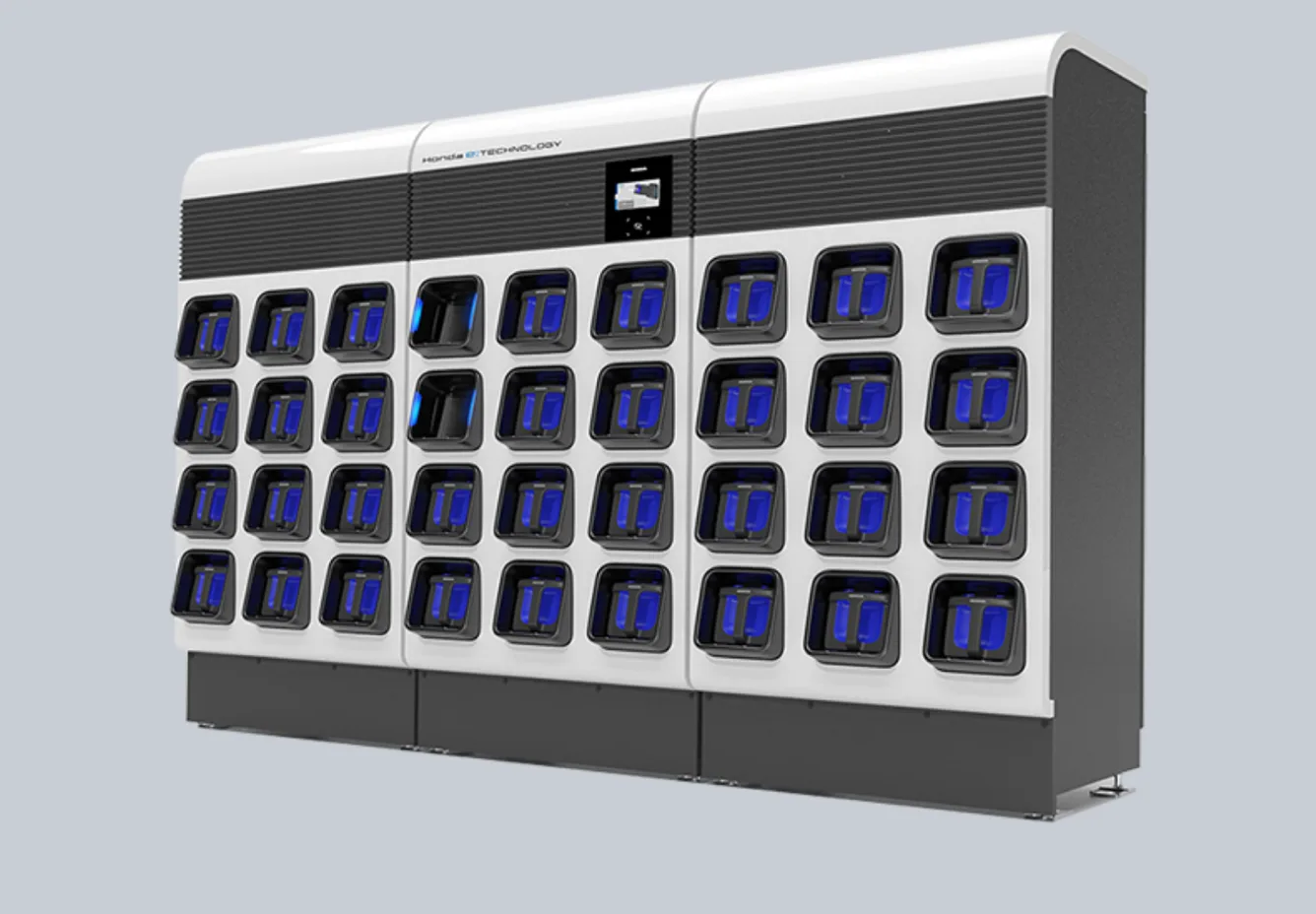
Mumbai has introduced battery-swapping stations at 31 Metro and Monorail locations. These battery-swapping kiosks allow users of Honda-compatible electric two- and three-wheelers to quickly exchange their depleted Mobile Power Pack for a fully charged one in under two minutes. Mumbai’s latest battery swapping initiative is a collaboration between Maha Mumbai Metro Operation Corporation Ltd (MMMOCL) and Honda Power Pack Energy India Pvt Ltd. The project has installed battery swapping stations for two and three-wheeled electric vehicles in battery kiosks at 25 Metro stations across the city, as well as six monorail stations. MMMOCL expects the stations to earn extra non-fare revenue, diversifying and increasing income in Mombai’s public transport system. While battery swapping stations are being introduced all over India, this project represents the first time these have been introduced within public transport systems in the country. Honda is one of the early movers with battery swapping technology globally, collaborating with other light electric vehicle manufacturers to standardise batteries accordingly. Chief Minister of Maharashtra, Shri Devendra Fadnavis, said, “Our government is committed to accelerating electric mobility across Maharashtra. Battery swapping stations at metro and monorail nodes will support delivery personnel, daily riders, and fleet operators in making the EV shift. This initiative is a perfect example of how smart infrastructure and green technology can come together for public benefit.” Mumbai is considered the startup and financial capital of India and is the capital of the state of Maharashtra. The city’s approximately 22 million inhabitants are being increasingly exposed to lower pollution levels as public transport, electric car charging, and even electric ferry services are spreading across the city. The dynamic shift to electric vehicles in India follows both federal and state initiatives to not only lower pollution levels but also to increase the country’s energy security. India, like China, does not have much in the way of domestic oil resources. Their goals to increase energy security with electrification have seen both countries, each with the world’s first and second largest populations, rapidly transition to electric vehicles, significantly reducing oil demand globally. Dr. Sanjay Mukherjee, IAS, Metropolitan Commissioner, MMRDA & Chairman, MMMOCL, said, “This collaboration with Honda marks a significant stride in our mission to create a sustainable, low-emission urban ecosystem. By enabling quick and convenient battery swapping at metro and monorail locations, we are laying the foundation for future-ready transport.” Battery swapping in areas with high population density has enabled rapid electrification with space-saving vehicles while keeping batteries in lifecycle loops. This saves resources with recycling, without consumers having to participate in battery recycling efforts. While battery swapping is used for electric cars, such as with Nio, both light electric vehicles and heavier logistics and delivery vehicles benefit from being able to remain on the roads without charging times and therefore no costly downtime. indiatoday.in, indianexpress.com, maharashtra.gov
Evolugen gets city council support for 250MW IESO tender-winning BESS project in Canada
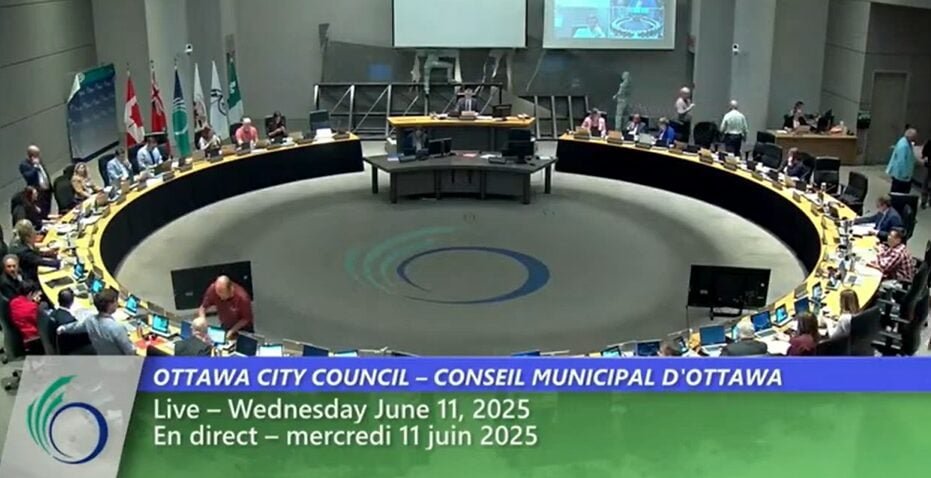
Evolugen gets city council support for 250MW IESO tender-winning BESS project in Canada - Energy-Storage.News Skip to content
SpaceX and Elon Musk share insights on Starship Ship 36's RUD
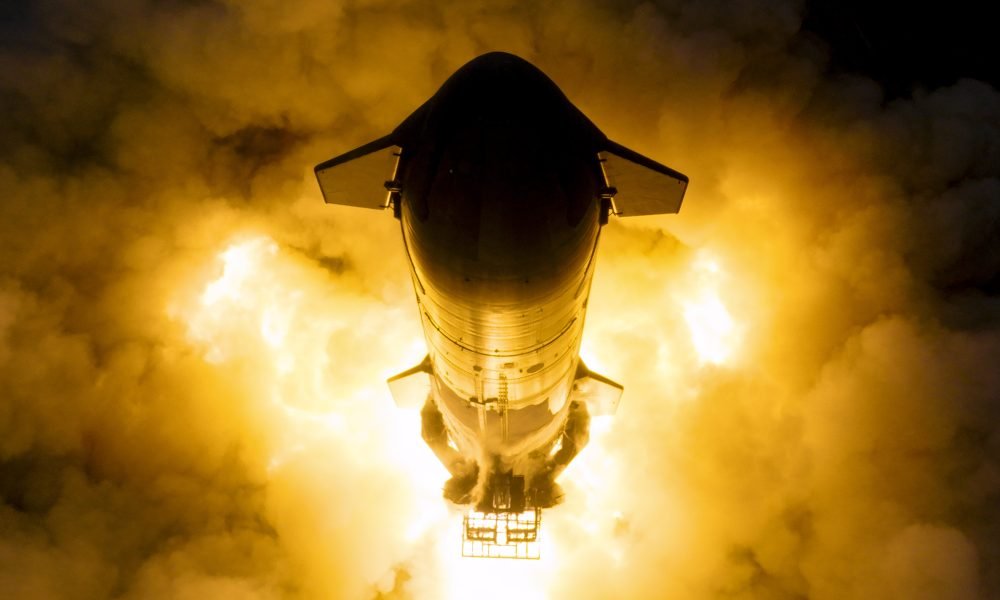
xAI’s Grok 3 is partnering with Oracle Cloud to deliver its advanced AI model to corporate customers. Oracle announced its collaboration with xAI earlier this week. The partnership leverages Oracle’s robust infrastructure to offer xAI’s Grok 3, positioning it as a transformative tool for business applications. “Today, we announced xAI has selected Oracle to offer xAI’s Grok models via OCI Generative AI service for a wide range of use cases and will use OCI’s leading AI infrastructure to train and run inferencing for its next-generation Grok models,” said Clay Magouyrk, Executive Vice President at Oracle Cloud Infrastructure, via LinkedIn. Oracle’s cost-effective AI capabilities will support xAI’s demanding workloads, enabling faster processing for enterprise users. Oracle’s Karan Batta told Reuters: “Our goal here is to make sure that we can provide a portfolio of models – we don’t have our own.” Oracle will host Grok 3 alongside models from Meta, Mistral, and Cohere, ensuring corporate data remains secure within existing Oracle protections. Oracle’s strategy focuses on integrating popular AI models into corporate software, and xAI’s Grok 3 enhances this portfolio. The collaboration expands Grok’s reach to businesses seeking secure, high-performance AI solutions for diverse use cases. Elon Musk’s xAI launched Grok 3 in February. It competes with models from DeepSeek and OpenAI. Grok 3 is free for all X users, but features are limited. X offers Premium and Premium+ subscribers access to Grok 3’s advanced capabilities like DeepResearch and Think modes. Users who are not paid subscribers have access to Grok 3’s basic features. Elon Musk’s companies have a longstanding relationship with Oracle. In 2018, Tesla appointed Oracle founder Larry Ellison to its board, a move Wedbush analyst Daniel Ives called a “home run appointment.” In 2023, Ellison–who is no longer on Tesla’s board but still close with Musk–revealed plans for a Tesla Cybertruck police car. “Our next-generation police car is coming out very soon,” Ellison said at the 2023 Oracle CloudWorld conference in Las Vegas. “It’s my favorite police car. It’s my favorite car, actually. It’s Elon’s favorite car.” Grok 3’s integration into Oracle Cloud strengthens xAI’s position in the corporate artificial intelligence market. By combining Oracle’s infrastructure with Grok’s cutting-edge capabilities, this collaboration could redefine enterprise AI adoption, driving innovation across industries.
Novacium launches industrial production of high-performance batteries incorporating its silicon-based anode material

HPQ Silicon Inc., a technology company driving innovation in advanced materials and critical process development, is proud to announce that its French technology partner, NOVACIUM SAS, has launched the industrial production of cylindrical lithium-ion battery cells incorporating its third-generation silicon-based anode material. Following the press releases dated July 30, 2024, and March 19, 2025, which highlighted the strong performance of 18650 cells made using its GEN3 silicon-based anode material, Novacium has attracted significant interest from a number of key players in the energy sector. The resulting cells — offering a capacity of 4,000 mAh and 1,000 charge cycles — are particularly well-suited to the demanding requirements of the mobility, consumer electronics, telecommunications, and defense industries. In response to this growing demand, Novacium has decided to accelerate the industrial deployment of its technology by shifting toward large-scale production. “This strategic acceleration is a response to the strong market interest,” said Dr. Jed Kraiem, Ph.D., Chief Operating Officer of Novacium. “Our objective is to deliver the first commercial units and begin formalizing partnerships before the end of Q3 2025.” To meet this ambitious timeline, Novacium has partnered with a leading industrial player [1], who rapidly integrated the GEN3 silicon-based anode into its manufacturing line—faster than expected. This rapid success confirms a key advantage of the GEN3 technology: its compatibility with existing production infrastructure. Initial industrial production has yielded cylindrical cells in both the 18650 and 21700 formats, with capacities of 4,000 mAh and 6,000 mAh, respectively—performance levels among the highest currently available on the market [2], and fully consistent with prior lab-scale results. This progress was enabled by Novacium’s decision to collaborate with a partner already operating tens of millions of cells in annual production capacity. As a result, Novacium is positioned to scale rapidly and target significant commercial volumes in the coming months. “The outstanding performance of these new commercial cells validates not only our technology but also our agile and opportunistic industrial strategy,” added Dr. Kraiem. “We have moved beyond the laboratory—we are now delivering market-ready cells for evaluation and adoption by partners and future customers.” This strategic pivot also supports revenue generation, expands investment potential, and enables HPQ—the exclusive North American licensee of the GEN3 technology—to prepare for local production. HPQ aims to address the continent’s growing battery demand and initiate its own manufacturing in Canada. “This rapid launch confirms that our partnership with Novacium—and our broader commercial vision—is delivering tangible, market-ready results,” said Bernard Tourillon, CEO of HPQ Silicon Inc. and Novacium SAS. “We are not here to follow the market—we are here to help shape it.” “With our exclusive North American license and the significant technical progress made by Novacium, HPQ is strategically positioned to benefit from technology transfer, meet growing demand, generate revenues before year-end, and lay the groundwork for high-value local production,” Mr. Tourillon added. “This marks a pivotal milestone in the monetization of our technology portfolio.” This launch underscores HPQ and Novacium’s ability to rapidly transition from R&D to industrialization—a vital advantage in the global race for electrification and next-generation energy storage solutions. hpqsilicon.com
DESRI, Origis, rPlus finance & start building US solar and storage
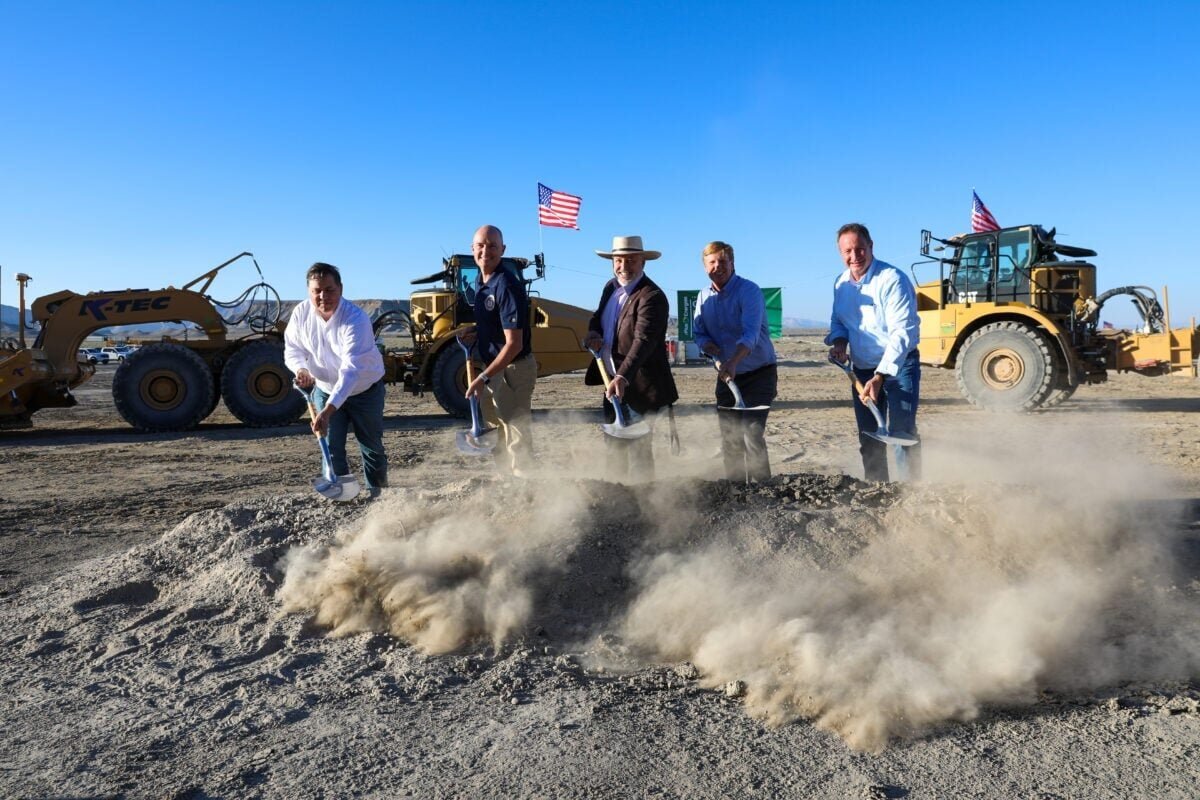
DESRI, Origis, rPlus finance & start building US solar and storage - Energy-Storage.News Skip to content
Are Ford and GM sparring over battery manufacturing?
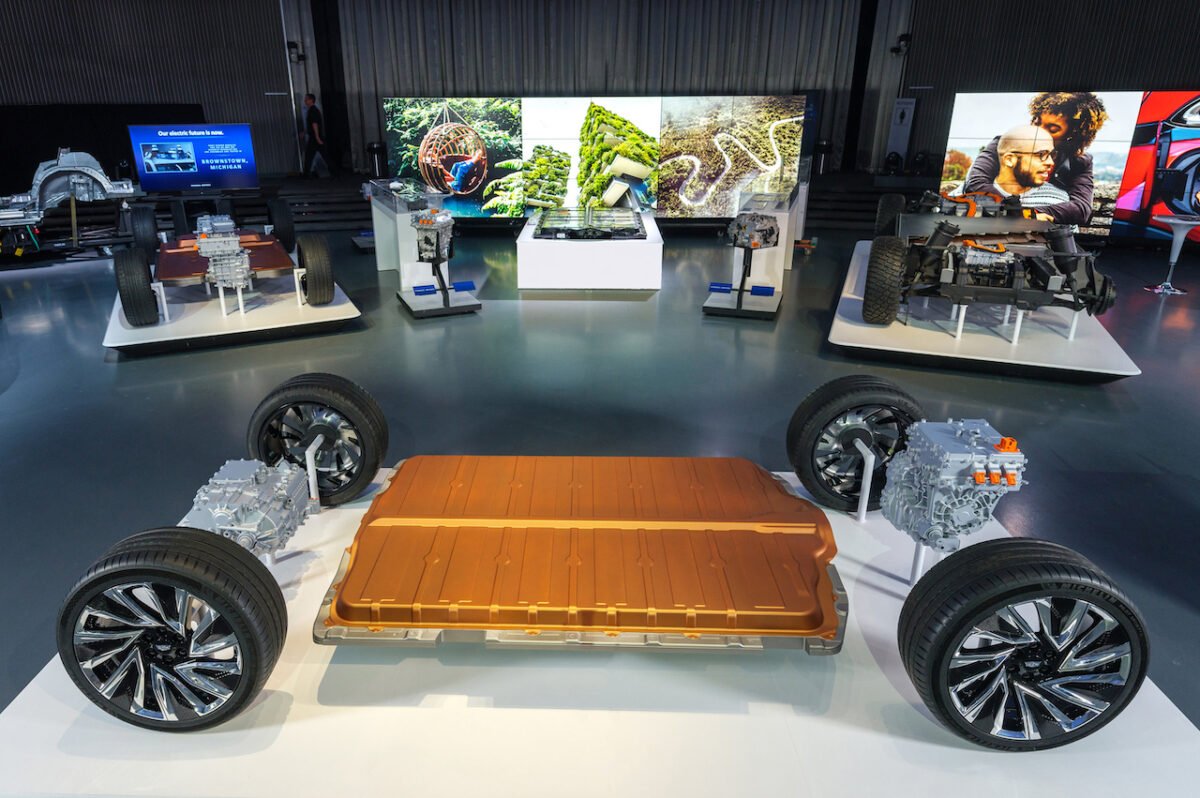
Ford and GM face many of the same industry challenges, which may be prompting new fronts for competition in Detroit. By Will Girling Ford’s Blue Oval battery plant in Marshall, Michigan, is facing difficulties in the form of a proposed budget bill in the US House of Representatives, which would make it ineligible for federal subsidies. Although the automaker has not explicitly named any Detroit rivals, a 19 June 2025 article by Crain’s Detroit Business cited four anonymous sources indicating that General Motors is behind the lobbying efforts. Subscribe to Automotive World to continue reading Sign up now and gain unlimited access to our news, analysis, data, and research Subscribe Already a member? Join our LinkedIn Group Let us help you understand the future of mobility "*" indicates required fields
Amazon, Meta and others eye new carbon credit to end coal power
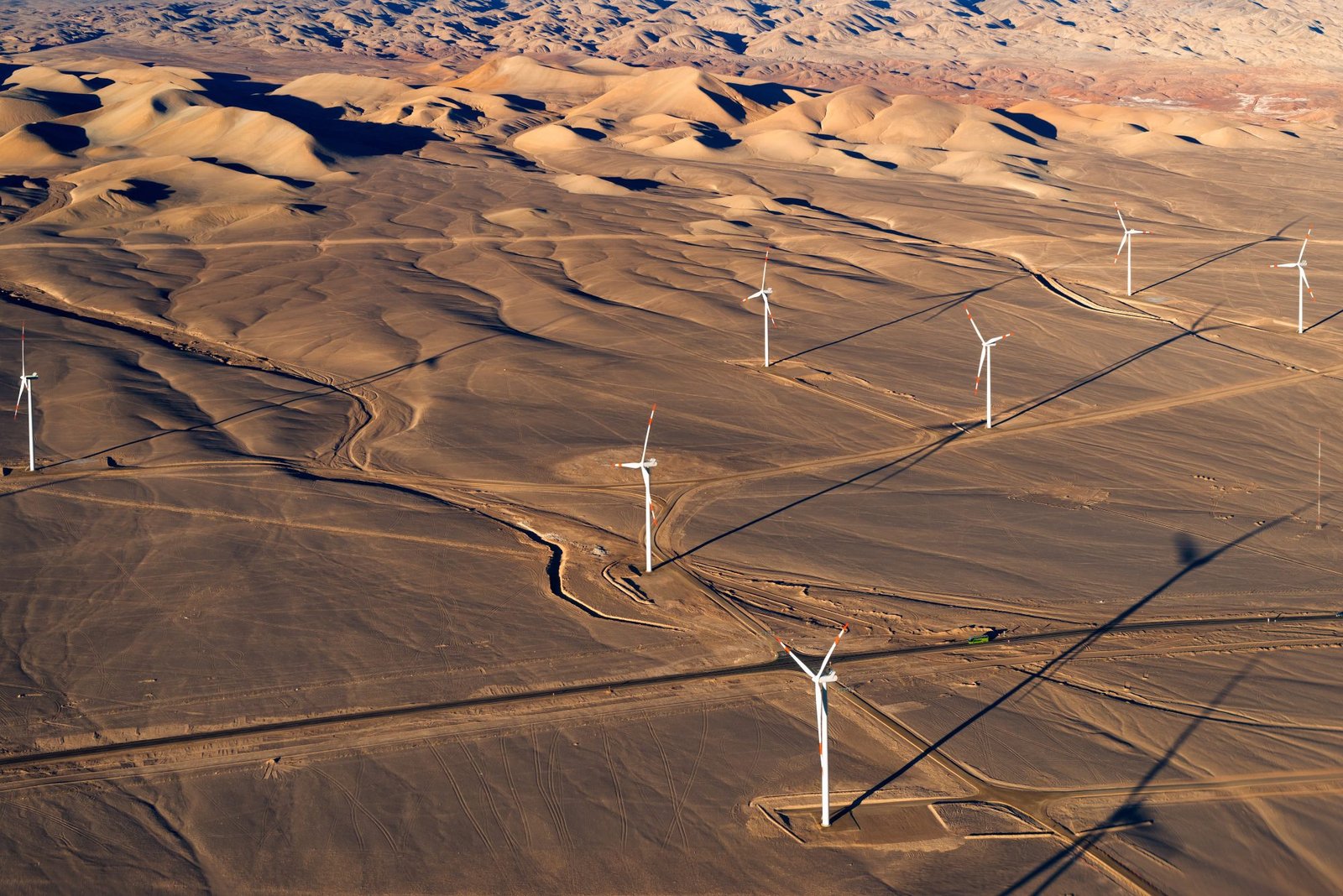
A cross-industry group of around 20 companies is helping develop plans for a new type of carbon credit to fund the retirement of coal-powered power plants in emerging economies. The Kinetic Coalition, the organization overseeing the initiative, is aiming to aggregate demand from the companies and launch an advance market commitment. The group includes Amazon, Mastercard, Morgan Stanley and Tiffany & Co. The coalition is targeting a major source of emissions that is challenging to decarbonize. Close to a third of global carbon emissions come from coal power plants and almost 80 percent of those emissions come from emerging economies, according to the Rockefeller Foundation, one of the organizations involved in the project. Many of these facilities are relatively new. If the plants are retired, owners and investors need to be compensated and the facilities replaced with renewables. The coalition aims to channel money from companies in wealthier nations towards those ends, generating carbon credits for the backers in the process. “This is both a great way to accelerate climate finance into an area that’s so valuable and so needed, and a way of helping companies meet their climate commitments,” said Nathaniel Keohane, president of the Center for Climate and Energy Solutions, the non-profit that coordinates the coalition. Pilot projects Keohane and team are currently evaluating three pilot projects that could form the basis for future credits. In the Philippines, where coal generates close to 80 percent of the country’s electricity, the coalition is looking to fund the early replacement of one plant with clean energy and storage. Projects in Chile and the Dominican Republic are focused on improvements to modernize the countries’ grids and integrate more renewables. Credits generated by the projects could be used in multiple ways. Schneider Electric, another participant in the coalition, is considering using them to offset company emissions or, as part of its sustainability consulting work, to sell on to clients, said Mathilde Mignot, a group director at Schneider subsidiary EcoAct and the company’s liaison to the coalition. The coalition is also investigating the possibility of using the credits to reduce Scope 3 emissions, a process known as insetting. Companies that buy from suppliers in the Philippines, for example, will likely have emissions from coal power in their Scope 3 accounts. Using the credits as insets would allow them to reduce that category of emissions. Keohane said the coalition is working to align its thinking in this area with ideas being developed by the Advanced and Indirect Mitigation Platform, a non-profit that’s developing standards for this kind of value-chain intervention. There is little precedent for assessing the integrity of the credits that the coalition will generate, but Keohane said the goal is to align with leading carbon credit standard-setters, including the Integrity Council for the Voluntary Carbon Market and the Carbon Offsetting and Reduction Scheme for International Aviation. Specific projects could follow a methodology for early retirement of coal plants, released in May by Verra, or guidelines for sector-level intervention being developed by the non-profits Gold Standard and Environmental Resources Trust. ‘The demand will be there’ The sums required will be considerable. Keohone said it was too early to discuss funding for specific projects but estimated that interventions on this scale could run to hundreds of millions of dollars. That would constitute a significant chunk of the entire market for carbon credits, which the finance intelligence service MSCI pegged at $1.4 billion in 2024. The credits may have distinctive qualities, however. Investing in projects close to value chains could appeal to the internal company stakeholders that allocate credit investment, said Mignot. They may also be competitive: Keohane said prices between $30 and $60 per ton of avoided CO2 have been discussed for early retirement of coal power in the Philippines. That would make the credits more expensive than many forest projects, roughly on par with biochar and significantly cheaper than direct air capture. Since upfront capital would be required to retire and replace the plants, the coalition is considering aggregating demand from participating companies in the form of an advance market commitment, a funding mechanism that’s been deployed to generate other credit types. Keohone said he hoped to make an announcement at the COP30 negotiations in November. “If we can demonstrate that these credits are high integrity — we’re confident about that — and that there’s a business case to help companies meet their commitments, we think the demand will be there,” he said.

